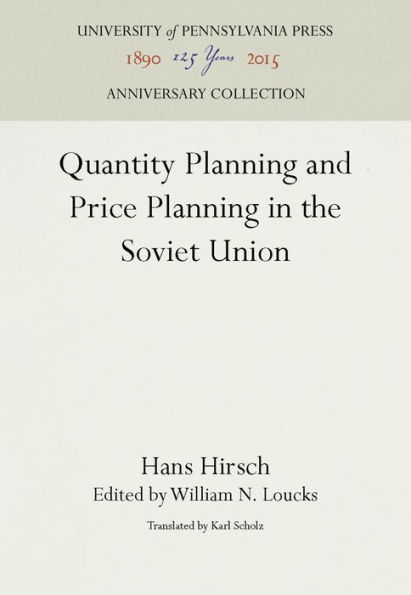Home
Quantity Planning and Price Planning in the Soviet Union
Barnes and Noble
Quantity Planning and Price Planning in the Soviet Union
Current price: $95.00


Barnes and Noble
Quantity Planning and Price Planning in the Soviet Union
Current price: $95.00
Size: OS
Loading Inventory...
*Product information may vary - to confirm product availability, pricing, shipping and return information please contact Barnes and Noble
Karl Scholz's translation of the study
Mengenplanung und Preisplanung in der Sovijunion
by Hans Hirsch reproduces the provocative thesis of the author in concise, lucid English. The need for such a book is made dear in Hans Hirsch's introduction:
"The question of economic accounting under socialism has attracted much interest for a long time. This is primarily due to its key position in the controversy over the economic order. However, if understood correctly, it is just as important to pure economic theory. Here lies the best opportunity first to examine price theory statements and to perceive how far price theory has either general validity or is merely applicable to particular historical phenomena and, secondly, to separate out the items that are not determined by the logic of the theoretical system but by the incidental peculiarities of the empirical economy to which the theory is related.
Hans Hirsch's treatise deals with the Soviet experience and difficulties. The treatise also shows the methods of economic guidance employed in Russia by considering the following significant theoretical economic series of topics: the principles determine quantities of product and the direction of their use; the distribution of authority and influence between higher and lower guiding agencies; the role of prices in the guiding process; and finally the operating forces and viewpoints, in setting prices. In the presentation the conflict between the system of material planning, which forms the basis, and the effects of the financial means of guidance, especially of prices, becomes clearly visible. This gives occasion to attempt a theoretical interpretation of the material guidance system, as such, and in its relationship to a financial guidance system. In so doing the author expresses views as to the basic compatibility of material and financial guidance methods, contrary to hitherto prevailing doctrine. The knowledge thus acquired will serve as renewed stimulus to further development of the theory of economic planning.


















